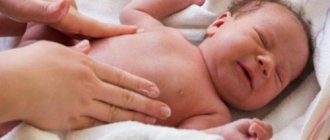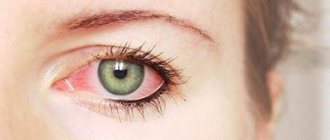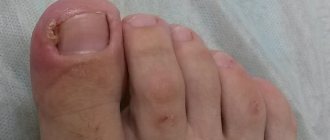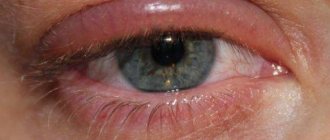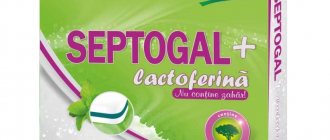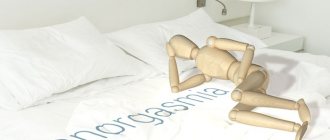Alalia is the name given to underdevelopment or complete absence of speech in children. This is the result of damage to the central nervous system that occurred either in fetal development or in the first 3 years of the child’s life. If the necessary measures are not taken in time, a child with such a disease will never learn to talk.
Alalia is in no way associated with intellectual or hearing impairments of the child. There are cases when patients with this disease began to talk only after reaching school age.
Please note: Alalia is a disease that cannot be treated independently. To find out an accurate diagnosis and receive subsequent treatment, you need to contact a neurologist who will examine the child.
The appearance of secondary speech delay occurs if treatment for alalia was started at a later age of the patient. Children with this disease demonstrate a poorer knowledge of the world around them than their peers. Alalia is accompanied by violations of lexical, phonetic, syntactic, morphological and grammatical speech.
Sensory alalia
This is a developmental defect in which the patient does not speak himself. He is also unable to understand the words that are addressed to him. Among children who suffer from problems associated with the speech apparatus, sensory alalia occurs only in 10% of cases.
With sensory alalia, the child does not understand the speech of others, and his speech does not develop. Speech impairment in this case is secondary in nature, as it is associated with problems related to misunderstanding of the speech of others and impaired phonemic hearing.
This form of alalia is accompanied by underdevelopment or damage to the speech-hearing analyzer. As a result, the child is unable to connect sounds heard from adults into words.
Diagnosis of alalia
Patients diagnosed with alalia need to be examined by the following specialists:
- Speech therapist - for perinatal history, identifying features of speech and psychomotor underdevelopment, as well as drawing up a model of lexical and grammatical structure, correction of phonemic processes and impressive speech.
- Neurologist - to identify the source of neuralgic dysfunctions and genetic abnormalities.
- Psychologist - to diagnose auditory-verbal memory, timing of psychomotor development, articulatory motor skills.
- Otolaryngologist - when drawing up a therapeutic treatment plan, it is necessary to exclude damage to the function of the hearing aid.
For additional diagnostics and identification of the degree of brain pathologies, the following is carried out:
- EEG;
- otoscopy;
- audiometry;
- MRI of the brain;
- X-ray of the skull;
- echo-encephalography.
Causes
The reason for the appearance of sensory alalia in a child is damage to certain areas of the brain that are located in the cortical part. These zones are responsible for the speech apparatus, understanding and analysis of audible sounds. The following factors can lead to such a violation:
- Diseases that arise in the first years of a child’s life.
- Central nervous system disorders that arose during complicated childbirth.
- Fetal pathologies that appeared during pregnancy.
A speech disorder such as sensory alalia can also be caused by other reasons. Diagnosis of the disease is possible only after a complete examination of the baby by specialists such as a neurologist, speech therapist and psychologist.
Causes of alalia
Different factors contribute to the occurrence of speech disorders at different stages of life. So, in the antenatal period:
- fetal hypoxia;
- toxicosis;
- injury to the fetus due to falls or bruises of the mother;
- intrauterine infections and inflammations;
- threats of miscarriage;
- metabolic disorders during intrauterine development;
- maternal diseases of a chronic nature (heart and pulmonary failure, hypertension, etc.).
In the perinatal period:
- difficult or pathological childbirth;
- asphyxia, hypoxia of the newborn and intracranial birth injury;
- use of obstetric devices.
In the first years of life:
- brain injuries;
- inflammatory processes of the brain;
- diseases that cause depletion of the nervous system;
- frequent or prolonged somatic diseases.
In addition to biological factors, the condition is aggravated by unfavorable social conditions of the child’s development: pedagogical neglect, lack of verbal contact or its rarity. As a rule, with alalia there is not one reason that provokes an increase in the defect, but a whole complex that leads to brain dysfunction.
Symptoms
With a form of disorder such as sensory alalia, the child is unable to understand speech that was addressed to him. If the disorder is severe, then the child may experience absolute indifference to any sounds, regardless of the nature of their origin. The patient does not respond to his name and cannot distinguish the speech of an adult from any other sounds in space. If the form of the disorder is mild, then the child can demonstrate understanding of individual words from everyday life.
With sensory alalia, the child’s speech activity is quite high, but he utters only simple sounds, the meaning of which cannot be understood by others. The child is not able to repeat words after adults, and he also cannot compare objects and words.
A distinctive feature of this type of alalia is the repeated repetition of any sounds without understanding the meaning of what was said.
What is alalia
Alalia in children is a consequence of damage that occurred during the prenatal or early period of life. Without specially developed treatment, children with this disease will not begin to speak independently.
The appearance of speech may be postponed to preschool, and in some cases to a later period. In such children, such speech delay is not associated with hearing and intellectual defects.
Attention! Alalia cannot be treated at home; to make a diagnosis and prescribe therapy, you only need to visit a specialist in person. First of all, you need to contact your local pediatrician, who will refer the child for further examination.
If correctional therapy begins after 4-5 years, secondary speech delay is possible, associated with the mental development of the child. These children have less knowledge about the world around them than their healthy peers. Alalia is characterized by violations of all aspects of speech:
- phonetic;
- lexical;
- grammatical;
- morphological;
- syntactic.
This is a systemic disorder of the speech apparatus, in which it is difficult to learn the rules of functioning of the native language. The vocabulary is poor and ungrammatical. The treatment is complex and systematic over several years. Statistically, boys suffer from it twice as often.
Alalia is a persistent, severe pathology of the speech apparatus. Children with this diagnosis have difficulty acquiring language. They do not perceive speech as a single system. There are cases when a child does not begin to speak even by school age.
Disorders associated with this disease affect the baby's speech and cognitive activity. Later, problems may arise during the formation of personality. There is often a lack of desire for development and interaction with the outside world.
Alalia is characterized by a systemic nature of speech development disorders, which affects all its components. A child with such impairments does not understand speech addressed to him; all communication is reduced to short babbling words.
In subsequent years, a poor vocabulary, agrammatism, incorrect construction of syllables, and disturbances in the pronunciation of sounds are observed. Alalia is one of the most severe speech disorders. It is impossible to solve this complex problem without the help of speech therapists and other specialists.
Correction methods
Sensory alalia can be corrected only with an integrated approach, which includes:
- taking the necessary medications prescribed by a neurologist;
- neuropsychological correction;
- classes with a speech therapist-defectologist;
- conducting audiotherapy according to the A. Tomatis method (as prescribed by a neurologist);
It is important that the assistance is comprehensive, therefore, in addition to taking medications that have a positive effect on the central nervous system, a specialist may prescribe comprehensive neurological rehabilitation.
Prognosis and prevention
The result depends on the type of motor alalia, the severity, and the age at which the disease was diagnosed and therapy was started. If all these conditions are met and adequate treatment is provided, the prognosis is favorable. Children catch up with their peers in speech and general development, acquire communication skills and even study in a regular school.
Severe motor alalia is difficult to correct, especially if it is diagnosed late. But with due persistence and following the doctor’s recommendations regarding treatment, it is possible to achieve significant progress.
Prevention of motor alalia begins during pregnancy planning. The expectant mother needs to eliminate bad habits, adjust her diet and daily routine. It is necessary to approach childbirth adequately and prevent injuries. It is also important to create favorable conditions for the development of the child in the postpartum period and subsequently, to devote time to developmental activities.
And of course, it is necessary to consult a doctor at the first signs of deviations in speech development in order to undergo a timely diagnosis and identify the cause.
Forecast, preventive measures
When alalia is detected in a child, it is important to start therapy as early as possible. This will not only significantly smooth out existing speech disorders, but also reduce the risk of developing deviations in the future. Only the attending physician can give a prognosis, since this is very individual and depends on many factors: the severity of the disease, the degree of neglect, the presence of associated complications, and the individual characteristics of the child’s body.
The chance that a child will be able to acquire formed, full-fledged speech with sensory alalia is significantly reduced when contacting a specialist late. Lack of therapy can aggravate the situation and cause poor socialization of the child in the future.
It is appropriate to take measures to prevent sensory alalia not only during pregnancy, but also in the first few years of a child’s life.
Possible complications and consequences
If parents do not take a child with alalia to a specialist or do not follow his recommendations, the condition progresses. If we are talking about the motor form of the disease, the baby may encounter problems such as:
- speech negativism (reluctance to speak);
- stuttering;
- dysgraphia and dyslexia (reading and writing disorders).
Any form of speech impairment without correction causes delayed intellectual development, significant difficulties in learning and socialization of the child.
Motor alalia
This form of disorder is a consequence of motor disorders in the child’s body. Accompanied by a poor vocabulary. A child with this type of alalia finds it difficult to express his thoughts, form phrases and use words correctly.
Children with motor alalia have normal mobility of the organs responsible for speech. However, it is difficult for a child, for example, to lift his tongue up if adults ask him to do so. He cannot repeat the words he heard. Such children have mental and neurological disorders due to the disease.
More often, children with motor alalia have difficulty in physical activity, but in some cases the child may demonstrate increased activity, which is associated with the location of the lesion in the brain.
Alalia forms
There are several forms of motor alalia. It is customary to distinguish motor and sensory types of diseases. In the first case, the child cannot speak, in the second, he does not understand speech addressed to him. Sometimes vague symptoms occur, in which case doctors diagnose “mixed alalia.”
Alalia is brain damage that prevents a child from speaking.
Motor alalia
Motor (expressive) alalia is a disease in which the part of the child’s brain responsible for speech production is affected. It is located in the left hemisphere. During normal development, a newborn first assimilates non-speech noises: natural, technical, object. They are absorbed by the right hemisphere and become the basis for active speech development.
The task of the left hemisphere is to filter the signs of speech from the sounds collected by the right hemisphere. Non-speech sounds pass through the corpus callosum from one hemisphere to the other and are converted into speech sounds. This forms a speech base and allows the child to learn to speak. But children with motor alalia cannot modify non-speech sounds - they have damage to the part of the brain responsible for this function.
Depending on the severity of the damage, the baby can distinguish sounds and assimilate their semantic connections, but at the same time he is unable to form articulatory movements. If the damage to the cerebral cortex and left hemisphere is not severe and the motor areas are preserved, this ability can be restored.
Depending on the location of the problems, motor alalia can take two forms:
- efferent. Occurs when the premotor cortex is damaged (posterior third of the inferior frontal gyrus, Broca's area). Because of it, the child becomes unable to form a series of movements: he pronounces a single sound, but cannot say a group of sounds. Symptom: distortion of the syllabic structure of a word, getting stuck on one syllable;
- afferent. Occurs when the postcentral zone of the cerebral cortex (lower parietal part of the left hemisphere) is damaged. It causes a disorder in the senses of articulatory posture: the child does not understand whether his mouth is open or closed, what position his tongue and lips are in, or whether there is vibration of the vocal cords. This leads to incorrect pronunciation of some sounds. Also, the baby avoids saying sounds that are too complex in terms of articulation, so he often skips or replaces them with others.
Both types of motor alalia are treated with a set of measures that include both drug therapy and speech therapy sessions.
Symptoms of motor alalia
The symptoms of motor alalia are:
- complete absence of speech after 3 years of life (before this, doctors diagnose “delayed speech development”);
- neurological symptoms: fatigue, unilateral ptosis of the eyelid, shifting pupils, disorder of finger motor skills, difficulty identifying parts, numbers, sides (left-right);
- psychopathological symptoms: deviations in auditory attention, concrete thinking, weakness of attention, underdevelopment of the emotional and volitional sphere, mood lability, excessive gullibility or severe irritability;
- poor posture and asthenicity, problems with coordination of movements, left-handedness due to weakness of the right hand, hyperactivity or immobility;
- speech signs: impaired pronunciation of all groups of sounds, inability to correctly pronounce words, phrases, incorrect use of pitch and strength of voice, impoverished vocabulary, gross violations of grammar (infinitives are especially often used instead of verb forms);
- the discrepancy between active and passive vocabulary is a very clear symptom. The child understands the word and is able to interpret its meaning, but cannot pronounce it.
Early diagnosis of this disease allows you to start treatment on time and make it more effective. If you notice one or more symptoms, do not delay visiting your doctor.
Diagnosis and treatment of motor alalia
With motor alalia, much attention is paid to diagnosis. The problem is that this disease can be easily confused with other speech disorders. The examination should include:
- taking anamnesis, if possible. It allows you to determine the causes of pathology;
- completing various studies. Often prescribed: EEG, echoencephalography, auditory function testing - otoscopy, audiometry; X-ray of the skull, MRI of the brain;
- consultations with an ENT specialist, psychoneurologist, neurologist, psychologist;
- dynamic examination, which begins after correctional work: a specialist looks at the dynamics of speech development and clarifies the diagnosis.
Children with motor alalia must be treated using several methods at once. With the right approach, you can return a child to normal speech in 2-3 years. To do this you need:
- Take medications such as Piracetam, Nootropil, Pantogam, Cerebrolysin, Actovegil, etc.
- Visit a physiotherapy office. Electrophoresis, magnetic and laser therapy, IRT, hydrotherapy, and electropuncture are often prescribed.
- Work with fine motor skills, develop memory and thinking.
- Form a vocabulary, engage in logorhythmic exercises, stimulate speech activity.
It is very important to choose the right drugs based on the degree of brain damage. Also, treatment should be carried out by an experienced speech therapist who is already familiar with the problem and knows how to work with it. Avoid traditional methods: they are ineffective and simply waste your time.
Possible complications and consequences
If time is wasted and children with motor alalia are not treated, they may have significant problems in the future. The most common consequences:
- the appearance of dysgraphia and dyslexia, when a child cannot write or perceive written text correctly;
- the occurrence of stuttering and other disturbances in the functioning of the articulatory apparatus;
- the appearance and strengthening of speech negativism (conscious refusal to speak when the child does not want to use words at all).
Complications significantly complicate the child's integration into society and reduce his learning opportunities.
Speech negativism can be a consequence of other factors. For example, diction is impaired by crooked teeth. Read more about this here: Causes, dangers and treatment of crooked teeth in children and adults.
Forecast
The prognosis and improvements observed during treatment of children with motor alalia depend very much on the degree of damage to brain structures. In many ways, our body is able to compensate for some violations, but this is impossible with extensive lesions. The age at which treatment began also influences, since the older the person, the less likely it is to restore speech function.
The disease has a favorable prognosis: after 2-3 years of regular classes, the child will reach the language norm, compensate for the impairments and get rid of most symptoms.
Prevention
Prevention of alalia must begin during pregnancy. During this period, it is necessary to avoid factors that can damage the speech centers in the child’s brain or cause their insufficient development. You should also not give up breastfeeding without good reasons, conduct regular examinations of the baby and engage in the comprehensive development of the child.
There is no panacea, no magic method that is guaranteed to save you from the development of motor alalia. But the right approach to bearing and raising a baby will help simplify diagnosis at the beginning of life and make subsequent treatment more effective.
Sensory alalia
Sensory alalia is a consequence of damage to the cortical end of the auditory-speech analyzer (Wernicke's center) and its pathways. Because of this damage, the child “does not hear” the words of others, despite good hearing and the ability to develop active speech. The child’s own speech is completely absent, and if it develops, it stops at the level of babbling words. The baby can repeat the word he just heard and remember it for a while. The lack of ability to recognize sounds leads to the fact that the child does not understand speech at all.
Diagnostic methods and symptoms
Diagnosis is carried out using the same methods as for children with motor alalia: the child needs to undergo an EEG, skull X-ray, MRI of the brain, otoscopy, etc. To clarify the diagnosis, you should visit a neurologist, speech therapist, psychologist, otolaryngologist.
The diagnosis is made when several of the following symptoms are observed at once:
- speech is active, children “talk” a lot and with normal intonations, but at the same time the phrases are incomprehensible to others because they consist of fragments of words and meaningless sound combinations;
- connections between heard and spoken words are not formed, the names of objects are not assigned to them;
- the child remembers the word after 20-25 repetitions, compared with the normal 3-5 for a healthy child;
- there is a lack of control over one’s own speech;
- neurological and mental symptoms manifest themselves in increased excitability, weak manifestations of the emotional-volitional sphere and secondary mental retardation.
Often children with sensory alalia exhibit non-standard hearing function. They hear any sounds well, but quickly get tired of them, so they may stop perceiving loud sounds (exhaustion of auditory function). A child can perceive effects of the same frequency and volume in different ways: sometimes he hears them, sometimes he doesn’t hear them. The greater the interval between sounds/words, the better the child recognizes them.
Corrective work of a speech therapist
It is important to understand that the main task of a speech therapist when working with alalik is to turn on the preserved channels of speech activity and make them work actively. There are many techniques for this, which only a specialist can apply correctly. Parents cannot replace a speech therapist.
Classes with a speech therapist for alalia are very important
Treatment options
Sensory alalia is most often treated primarily with medication. But this is not entirely the right approach: a complex influence is needed. The stages of treatment are as follows:
- Selection of drugs. They are needed to improve cerebral circulation and correct behavior (if the child is too passive or too active). It is possible to replace the effects of the pills with traditional Chinese medicine, but this requires a trip to China. In Russia, such treatment is offered mainly by charlatans.
- Working with a psychologist. Moreover, it is needed not only by the child, but also by the family. It is very important to properly build communication between all people involved in treatment.
- Working with a speech therapist. The speech therapist is the main specialist who confirms the diagnosis and begins treatment. It is very important to find a good doctor.
- Finding motivation. Classes are difficult for most children, so it is important that the family supports the child’s success.
- Forming the habit of studying at home. It is important that parents come to understand that treatment does not end at the speech therapist’s office. At home, you need to create conditions for classes, purchase or borrow teaching materials, learn how to use them correctly, and ask your speech therapist for homework. Creative activities for the development of fine motor skills are also important: drawing, modeling, etc. It is possible to connect additional non-standard techniques: hippotherapy, dolphin therapy, etc.
- Overcoming speech negativism and creating the right language environment.
- Development of motor skills through active games, music, dancing, logarithmic activities.
The more options for treatment activities you include and the better conditions you create, the greater the chance of coping with the disease.
Massage technique
Often, with alalia, it is recommended to do a special speech therapy massage. It is necessary not for the development of articulation organs, but so that the child begins to feel them better. But often massage is not required at all: speech impairment is often caused not by problems with the articulatory apparatus, but by other factors.
You cannot perform a massage on your own: it must be done by a specialist who has undergone special training and knows the specifics of working with patients. Massage is also contraindicated in cases of enlarged lymph nodes, viral or bacterial diseases of the oral cavity, blood and vascular diseases, and in some other cases.
Silence mode when correcting sensory alalia
There is a special technique that helps increase a child’s sensitivity to sounds. It consists in creating certain living conditions. The speech therapist recommends that parents organize a quiet hour and a day of hearing rest with some regularity. In the children's room, unnecessary sounds are eliminated for this purpose: TV, computer, tablet. Also, during this time, adults should not talk to the child.
The silence mode is interspersed with the interest mode. The child stops running away from annoying sounds and begins to study them. The speech therapist helps the child identify the subject of sound and recognize speech. The specialist also draws the child’s attention to various emotional reactions, helps them copy and express them if necessary.
Prognosis and prevention
Although motor alalia has a more favorable prognosis, parents of children with the sensory form should not give up. Here, too, the degree of brain damage has a strong influence. Be sure to go through all possible diagnostic options and select medications that help the body compensate for lost functions.
Possible mental disorders
Motor alalia is accompanied by various deviations that affect various areas of the child’s interaction with the outside world. A child with such a disorder reacts violently to everything, often cries and becomes hysterical, and does not want to have any contact with others. He also has:
- thought processes occur more slowly;
- memory is impaired;
- there is a deterioration in concentration;
- visuospatial impairments are present.
Such children study worse, it is more difficult for them to remember any facts, as they are often distracted and cannot concentrate.
Treatment of motor alalia
The rehabilitation program should be aimed at the full development of the child’s motor skills. During treatment, specialists focus on the patient’s thinking and ability to remember information. Correction methods in this case are aimed at visualization, improving sound-letter productions, and developing the ability to concentrate. The set of prescribed measures affects the stimulation of speech and its meaningfulness, the increase in vocabulary and the correct development of speech.
Treatment and correction methods are being developed by many highly specialized specialists.
Alalia classification
Modern speech therapy distinguishes two forms in the classification of alalia - expressive (motor) and impressive (sensory). There is alalia that combines these two forms - sensorimotor (mixed type).
Expressive or motor – systemic underdevelopment of expressive speech of a central organic nature. This is due to the insufficient development of language operations.
Impressive or sensory alalia is a speech disorder that has a central pathogenesis. A child with this diagnosis is unable to understand speech addressed to him due to the malfunction of the speech-hearing analyzer.
Each of these types has its own treatment method. Without proper therapy, the sensory type is more dangerous for a child's development than the motor type. Based on neurophysiology, neurochemistry and psycholinguistics, methods for correcting all types of alalia have been developed. But the child’s parents must prepare themselves for long and hard work.
To make it easier to monitor speech development, speech therapists recommend a convenient and simple diary, where you should write down all the baby’s new words. You can download this questionnaire, fill it out and continue further. Be sure to take it with you to your appointment with a specialist - with its help you can quickly form a general impression of your child’s speech skills
Massage for alalia
Massage is needed more often with the motor type of alalia. Such procedures are aimed at improving articulation and tissue sensitivity. In addition, they coordinate the muscles of the tongue and face, and also help reduce excess salivation.
The mass should be carried out by a specialist, only in this case the procedures will be effective and have a therapeutic purpose. It is important that there are at least 10 massage sessions. The massage technique includes light tapping of the fingers on the pikes, tongue, and lips. The massage therapist makes pressing circular movements along the surface of the cheeks. The frequency of massage, type of movements, as well as the specifics of the procedure are determined individually and depend on the severity and form of the disease.
Mixed type - sensorimotor alalia
In most cases, a mixed type of alalia is observed - sensorimotor. To understand what sensorimotor alalia is, we will describe the classic clinical picture. The child spoke late and has difficulties in forming speech. The vocabulary (both active and passive) is quite meager. Understanding of spoken speech is poor.
Social adaptation skills are impaired, which often makes it difficult to differentiate sensorimotor alalia from autism spectrum disorders. There may be a fear of loud sounds, and obsessive movements are common. But nevertheless, this type is treatable and correctable.
Clinical picture, behavioral features
To be able to express their desires and emotions, children learn to communicate with adults using gestures. Later they begin to connect speech to this process, which gradually becomes more complex and improved.
However, children with alalia do not demonstrate such developmental success. They are unable to communicate with adults using speech. There are three degrees of underdevelopment of the speech apparatus:
- The child knows many words, but when pronouncing them, he greatly distorts them due to the poor development of the speech system.
- The child knows a list of simple words and demonstrates initial speech development skills.
- The child has no speech at all.
These levels have no relationship with age and depend solely on the severity and form of the disorder.
Corrective work
Speech therapy correction includes several areas and stages:
- Stimulation of speech activity. At the initial stage, it is important to create motivation, activate speech reactions, teach to imitate someone else’s speech, and enrich the vocabulary. The baby also learns to conduct a dialogue. It is easier to achieve results if you use a game form of training;
- Stimulation of phrasal speech. This stage begins after the baby has formed a certain set of words and develops the skill of conducting a dialogue. Then it becomes possible to construct simple sentences that gradually become more complex. At the same time, children learn the correct construction of words and sentences, grammatical errors disappear from their oral speech;
- The development of coherent speech involves teaching a child how to conduct a monologue or story. He learns to formulate a thought, retell what he read or heard, compose a story based on a picture, and compose. Grammar is reinforced;
- Elimination of phonetic-phonemic disorders through various exercises. The baby learns to pronounce sounds correctly, focusing on the position of the organs of articulation during classes and in everyday life. Over time, such control becomes automatic.
We would like to note the role of parents in the development of speech in a child. It is important to encourage his successes and his speech activity in every possible way. But if something doesn’t work out yet, you shouldn’t scold him.
Alalia correction
It is quite difficult to raise children with alalia, but parents must be patient and find an individual approach to their child, which is based on understanding, patience and calmness.
It is important to immediately contact a neurologist as soon as the first signs of alalia are detected. The sooner a diagnosis is made and treatment is prescribed, the greater the chance that the child will begin to speak fully in the future. With timely correction, the risks of complications are minimal.
Treatment of alalia is based on various methods and techniques. Pedagogical, medicinal, and psychological approaches play an important role. Correction steps should include:
- neuropsychological correction;
- classes with a speech therapist-defectologist;
- conducting audiotherapy according to the A. Tomatis method;
- rhythm therapy;
- bioacoustic correction;
- physiotherapy;
- massage.
The correction program should be developed based on the individual characteristics of the child. It is developed for each individual patient and depends on the form and severity of the disease.
Treatment of patients with alalia
The system of corrective action for sensory, motor and mixed alalia should include a set of procedures with an impact on the pathology itself and accompanying diagnoses. In correctional centers, specialized preschool educational institutions and speech therapy hospitals, medical, psychological and pedagogical therapy is used when treating patients with alalia. Drug treatment is mainly aimed at stimulating the formation of brain structures.
For pathologies of speech centers in the cerebral cortex, experts note the high effectiveness of the following physiotherapeutic procedures:
- DMV;
- IRT;
- hydrotherapy;
- laser therapy;
- electrophoresis;
- magnetic therapy;
- electropuncture;
- transcranial electrical stimulation.
When treating alalia, it is important to focus on the development of motor skills, thinking, and memory. The disease is caused by systemic disorders, therefore speech therapy treatment should be based on full coverage of sound-letter formulations and combinations, visualization of concepts, as well as concentration. Speech therapy massage and logorhythmics must be carried out along with speech therapy classes.
It is recommended that children with alalia begin to learn the alphabet, counting and writing as early as possible. Such skills allow you to better develop memory, learn to compose syllables into words and control speech.
In complex therapy of motor alalia, the main work should be aimed at:
- stimulation of speech activity;
- development of coherent speech;
- formation of speech reserve;
- grammatical format of the statement.
With a diagnosis of “sensory alalia,” the emphasis of speech therapy should be focused on developing skills to distinguish speech and non-speech sounds, differentiate words, and understand speech instructions.
It is important to systematically work through:
- correct phonemic awareness;
- acoustic skills;
- associative series.
Home therapy
Alalia therapy should not be limited only to classes with specialized specialists. Parents should try to help their baby. To quickly get rid of the disease, you can use special methods that have been developed for more effective treatment:
- Ask your child to point to objects more often, while saying their names.
- Play a game: name the object, and let the child find it and show it. You can use both ordinary household items and multi-colored figures or any toys.
- Talk to your child more often, and try to keep the speech not fast, understandable, and correct.
- Teach letters with your child, after he remembers a new one, ask him to name words that begin with this letter.
Children's books with many bright illustrations can help develop speech skills. Read them to your child more often, explain what is shown in the picture, tell fascinating stories about the characters.
Treatment
Treatment is carried out in several directions.
Speech therapy exercises. Can be carried out individually or within a special school. Positive results are achieved only by systematic, long-term training.
Under the guidance of a speech therapist, the child gradually masters the pronunciation of individual syllables and words and recognizes speech by its sound. With the help of various pictures, the skills of linking them with specific words are acquired.
When certain progress has been made, the child is already able to name one or another object shown in the picture. Gradually, the baby masters the correct endings of words, cases and declensions.
Additionally, classes are conducted that develop fine motor skills using drawing, modeling, cutting, and construction toys.
The success of treatment largely depends on home exercises. Exercises conducted with a speech therapist should be constantly reinforced with the direct participation of parents.
Speech therapy massage. Considered an effective addition to exercise. It develops individual muscles of the oral cavity responsible for correct pronunciation. The procedure is performed manually or using a special probe. Additionally, speech muscles are developed with the help of specific exercises designed specifically for these purposes.
Physiotherapeutic procedures. They are prescribed in the form of specific courses, depending on the child’s condition. They can be supplemented with hydrotherapy, magnetotherapy, laser therapy and other procedures.
Reflexology. Its essence is to stimulate the necessary areas of the brain with electrical impulses. This leads to the formation of new neural connections that facilitate learning. Applies to children over 9 years of age.
Drug therapy. Includes the use of drugs that stimulate blood flow to the brain. Additionally, vitamins B12 and B15 are prescribed. Much attention is paid to a balanced diet.
Prevention of alalia
If treatment is not started in time, the disease will soon be accompanied by serious complications: excessive excitability due to problems with communication and poor understanding of adults, lack of self-care and poor coordination of movements, as well as mental retardation.
This disease can be either acquired or congenital. The risks of developing alalia increase with fetal hypoxia, in the case of premature birth, if complications were identified during pregnancy.
To avoid the risk of developing alalia in a child, parents, even at the stage of pregnancy planning, should give up smoking and alcohol, undergo a comprehensive examination and pass the necessary tests. During pregnancy, a woman should minimize the risk of contracting any viral infections. In case of illness, a pregnant woman can be treated only with medications that are approved and safe for the fetus. When the baby is born, it is important to talk to him more often and find time for various educational games.
When you notice the first symptoms of alalia, it is important not to put off visiting a doctor who will examine the child and refer him for a comprehensive examination.
If you follow the recommended preventive measures, the risk of developing alalia will be minimized, the child’s nervous system will develop fully against the background of normal development of speech and motor skills.
Main reasons
The causes of the disease can be:
- Pathology of intrauterine development: maternal illnesses, injuries;
- Genetic predisposition;
- Complications during childbirth: hypoxia, infection;
- Head injuries;
- Poisoning with toxic substances.
Risk factors for the development of motor alalia may be frequent illnesses in children in the first years of life, surgical interventions under general anesthesia, insufficient speech contacts, as well as pedagogical neglect.
Forecast for overcoming the diagnosis
As speech therapists assure, if treatment was started at an early age, at about 3-4 years, then the chances of the baby’s full recovery greatly increase. Timely detection of the disease and immediately taken measures, a correctly selected set of therapeutic measures, as well as the experience of specialists are the key to successful treatment.
Experts note that the duration of recovery depends on the size of the damage to the speech centers. Statistics show that motor alalia is more amenable to correction. Children with this disorder quickly acquire speech skills, better adapt to communication with others, demonstrating positive dynamics of treatment. Other types of the disease are much more difficult to treat, but can be corrected with the right therapy. Children with these disorders may have difficulty remembering in school

